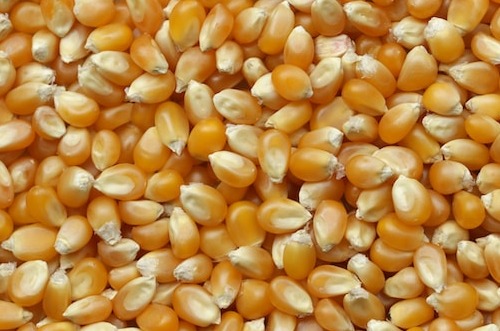W4 Corn Update: Brazil Forecasts 11% Decrease in 2023/24 Corn Harvest, Mato Grosso Leads Exports with 29.42% YoY Surge in 2023

Brazil's 2023/24 Corn Harvest Projections Revised Downward Due to Weather Challenges
Brazil's total corn harvest for the 2023/2024 marketing year (MY) is projected at 118.5 million metric tons (mmt), falling short of the initial expectation of 129.6 mmt. This projection reflects an 11% reduction in the estimated area for the first harvest, planted during the Brazilian spring. Additionally, for the second crop, which accounts for 75% of annual production and is ideally sown by mid-Feb-24, farmers are expected to reduce the planted area by 5% year-on-year (YoY). This is driven by factors such as a decrease in the planted area, diminished investment by farmers, and the impact of the intense El Niño phenomenon, leading to drought in central Brazil and excessive rainfall in the south.
Brazilian Corn Exports Soared by 29.42% YoY in 2023
Brazilian corn exports witnessed a substantial YoY surge of 29.42% in 2023, reaching 55.86 mmt. The state of Mato Grosso, a significant corn-producing region, played a pivotal role, contributing 52.15% to the overall international trade volume. The Mato Grosso Institute of Agricultural Economics (IMEA) reported a flow of 29.13 mmt of corn from the state, reflecting a notable YoY growth of 18.60%. This was due to the exploration of new markets, especially China, and the introduction of the largest production from the 2022/23 harvest in the latter part of the year.
10% of Ukrainian Corn Remains Unharvested in Jan-24 Amidst Challenges
As of Jan-24, 10% of Ukrainian corn remains unharvested, with 3.6 million hectares (ha) already threshed and a harvest of 28.3 mmt. Notably, farmers in 11 regions, particularly in Kherson (45%) and Kharkiv (38%) regions, have yet to complete corn harvesting. Many farmers left corn in the fields due to low prices, high drying costs, and challenging export conditions. Some are considering shifting to oilseed cultivation as an alternative to corn, although opinions on corn's profitability vary among farmers.
Argentinian 2023/24 Corn Projections Surged After Recent Rainfall
Recent rainfall in Argentina significantly improved the country's corn and production outlook for the 2023/24 MY. Forecasts indicate a rise in corn production to 56.7 mmt, an increase of 1.3 mmt. The increased precipitation, while beneficial for crops, also brings a potential risk of flooding in certain regions.
Primorsky Krai Corn Exports Surged in 2023, Crossing USD 60 Million Mark
Coastal corn from Primorsky Krai in Russia has gained a strong reputation as an environmentally friendly grain among buyers in the Asia-Pacific region, leading to growing demand. In 2023, approximately 220 thousand mt of corn were exported from Primorye to Asia-Pacific countries, making it one of the top five Russian regions engaged in agricultural product exports. Preliminary data from the Federal Customs Service indicates that Primorsky corn exports amounted to USD 57.7 million, with shipments to China, Japan, South Korea, and Georgia.
Record-Breaking 2023 Corn Harvest in Ontario, Canada Surpasses 9.6 MMT
Canada witnessed a historic corn harvest in 2023, particularly in Ontario, the central region of the country's Corn Belt. The final estimates revealed an impressive provincial yield surpassing 171 bushels per acre. Ontario experienced favorable growing conditions in most of the acreage, resulting in a bumper crop of around 9.6 mmt, exceeding the five-year average of approximately 9 mmt.
China's Corn Production Expected to Increase 4.2% YoY in 2023/24 MY
According to the United States Department of Agriculture (USDA), China's corn production in 2023/24 MY is projected to reach 288.8 mmt, a 4.2% YoY increase. This growth is due to expectations of larger cultivated areas and improved yields. Meanwhile, corn imports are anticipated to rise by 6.9% YoY to 20 mmt, with the first two months of the 2023/24 MY already seeing 5.6 mmt imported, primarily from Brazil and a smaller quantity from the United States (US).